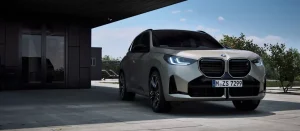The Future of the Auto Mile

The auto mile has been a flashpoint for technological, economic, and social innovation. It has transformed our lives more than any other human invention. If this disruption continues at the same pace, it will dwarf the ones experienced over the last 50 years. What’s the future of the auto mile? What will make it more successful? Let’s look at four potential future scenarios. Here are some of the most important changes to come.
The automobile will increasingly serve as a multimedia environment, not just a mode of transportation. Drivers will expect to have access to music, movies, and TV in their car, but also to take advantage of connectivity in a more convenient way. That means car makers must evolve and embrace these changes. The next generation of cars will be connected. It will also provide better experiences for passengers and generate new revenue streams. It will even be a virtual chauffeur, delivering passengers wherever they need to go.
While the future of the auto industry depends on the success of EVs and other green technologies, the car industry is still not there yet. In fact, the automobile industry has made major strides in just a few short years, driven by regulatory pressure, strong technological innovation, and increased investments in electric vehicles and EV platforms. In contrast, automakers are experiencing growing pains in their supply chains and bottom-line results. Continuing downward cost trends make it all the more difficult to meet these challenges, requiring bolder moves from OEMs. In addition to investing in new technologies, OEMs will need to collaborate with fleets and suppliers to help them scale up emobility.
Electric shared autonomous vehicles, also known as robo-taxis and shuttles, are a promising technology that addresses the pain points of urban mobility, such as traffic congestion, pollution, and parking spaces. Ultimately, they are likely to revolutionize urban mobility. As with the growth of shared autonomous vehicles, the future of the auto mile is uncertain, but the benefits of electric shared AVs are clear. These vehicles will reduce congestion, pollution, and private-car traffic.
Ridesharing companies invest hundreds of millions of dollars in research and development. The drivers receive a portion of the revenue generated by the ridesharing company. These companies will eventually offer dividends to the consumer. In the long run, they will generate new miles of travel. They will also serve as an affordable option for shorter trips. For instance, e-hailing companies could generate revenues from microvehicles for just a few dollars per mile.
Electric and hybrid vehicles could help eliminate some of the car ownership problems, while driverless cars could serve multiple family members at the same time. Driverless cars can also return to home bases after delivering a worker. Shared mobility is likely to increase as technology improves. The benefits of shared mobility will reduce the negative impacts of automobiles in the future. While the commercial mobility segment may not replace human drivers, it will catalyze a number of noteworthy innovations.




